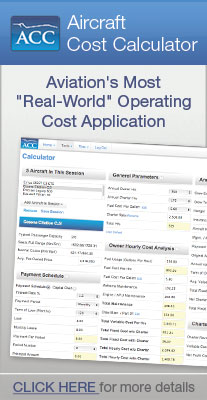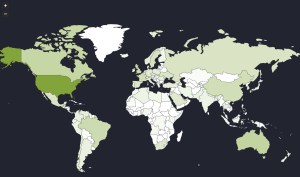Podcast: Play in new window | Download
Accessing private aviation to support your business or family travel goals can be accomplished via four main methods: ownership, charter, club, and private jet card. Each method meets a market need with the jet card being one of the industry’s latest innovations.
But, what is the jet card? And, what does the fine print in the numerous jet card programs actually mean?
Jet cards are “debit cards” you purchase in hourly blocks: 25, 50, 100 or more flight hours that provide access to private aviation. This sounds simple, but these cards come with PROS and COS that can make or break your travel experience.
Our guest today Doug Gollan, founder of PrivateJetCardComparisons.Com – a website that reveals the features, benefits, and burdens that accompany specific jet card products. Doug is here to help you decipher the details of jet cards so matching program to travel plan is easier.
Doug has spent a 16 years covering the high net-worth individual and executive travel experience launching magazines such as Elite Traveler and creating the DG Amazing Experiences e-newsletter for private jet owners. You’ll also find him talking travel in Forbes, CNBC, USA Today and demystifying jet cards at PrivateJetCardComparisons.com.
Jet Cards Defined
Let’s deposit $100K into a “private jet travel account.” Then, we’ll travel from New York to Chicago using a jet linked to our “private jet travel account.”
We take our flight… it lasts two hours at $5,000 per hour. When we land, our “private jet travel account” has $90K remaining. This is flying privately with simple budgeting and without owning an actual aviation asset. This is the jet card.
Sounds simple, and it is… IF we’ve partnered with the most suitable jet card program for our missions.
With some sixty jet card programs on the market, matching features and benefits to customer needs can become mind numbing. From daily limits to defining service areas (local, national, or global footprint definitions) to allowing minors or pets on the plane without parents, your friend’s jet card might not be right for you.
Who Buys Jet Cards?
The United States jet card market is estimated at $2B. Participants in the jet card niche include wealthy families, companies, corporate executives without access to the business’s bird, and even current jet owners who need supplemental capacity when their aircraft is flying another trip.
They travel somewhat frequently known destinations. If the annual summer vacation or offsite strategy meeting makes up most of your on-demand travel, the jet card could fit the bill. If your owned aircraft is too large or small for a required mission, the jet card could give you access to an appropriately-sized aircraft for the specific trips outside of a normal travel profile.
These relatively special requirements can justify a jet card.
How Do I Purchase a Jet Card?
Wrong question. First ask, “what jet card is right for me?” keeping in mind that your friend’s jet card night not be the correct card for you.
If avoiding $100K mistakes matters to you, your family office, or your company, analyzing a product matrix will get you flying faster with less frustration.
You can find such a product comparison chart on Doug’s site here. Or, you can invest $3K to $5K with a consultation to keep you on course when purchasing these products. Or, you can buy blind and hopefully avoid a financial or logistical blunder down the jet card road.
You’ll hear a few funny stories on this in the episode. But, when it comes to private flying be it by ownership, charter, club, or jet card, a good question beats a good answer.
In all cases, the products can be procured directly though jet card companies or indirectly by brokers.
What do Jet Cards Cost?
Typically, product pricing starts at $100K for 25 flying hours. Again, with sixty plus products on the market, matching program to travel plan drives cost. Annual spend of $500K is not uncommon. And, some clients surpass the $1M mark.
Since controlling cashflow is critical to EBITA and other financial metrics, smart private jet flyers differentiate between ownership, charter, club, and jet card based on flight hours. Generally speaking,
- If flying more than 200 hours, own your jet.
- If flying 100 to 200 hours, fly fractionally.
- If flying 25 – 100 hours, jet cards can make financial sense.
- If flying less than 25 hours annually, charter.
These guidelines ignore specific value factors such as full control and crew familiarity (ownership) or keeping capital spend off the books (charter). Different values drive different decisions on how to fly privately.
Who Owns The Airplanes?
Some companies own their aircraft fleet. Others own aircraft and source from the charter market. And some jet card companies pull from a managed aircraft inventory. Finally, a few companies create pre-screened aircraft fleets from the above sources and broker these birds into their jet card product offering.
In short, jet card aircraft should company owned or individually owned, yet operated commercially via. an air carrier certificate.
Making Jet Cards Simple
If you’re shopping for a jet card, Doug’s jet card comparison charts will help you filter through the product options, features, and benefits. You’ll pinpoint the private aviation card that’s perfect for you while saving time, money, and frustration.
Mentioned in the Show
Compare Private Jet Cards Here
Email Doug Gollan: DougGollan (AT) AOL.com
Call Doug Gollan: 917-328-6518
Your Opinion?
What jet card feature or benefit matters most for your private travel needs? Share your feedback below, or with me directly here.
Subscribe in iTunes | Give an iTunes Rating (here’s how)





